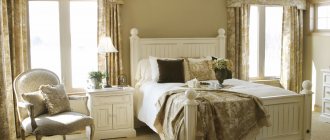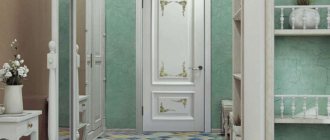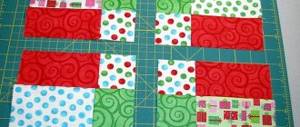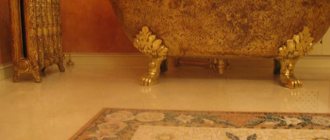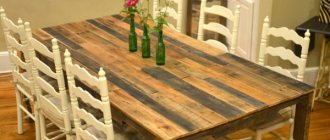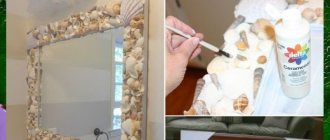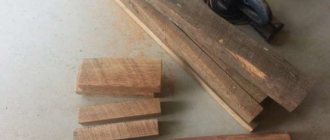Lighting can either transform or make any room uncomfortable. Suffice it to recall cold hospital corridors, and, for example, cafes, where there is always soft warm light.
Especially in winter, people miss the sun, so it is very important that there is always light at home. A special cozy atmosphere can be created with the help of various lamps or floor lamps. However, it is not always possible to choose a lamp that matches the interior of the room. But don’t be upset, because for any lamp you can make a lampshade with your own hands from fabric .
DIY frame and base for lampshade
First you need to choose a lamp or several lamps for which you need to make fabric lampshades . It is better to use lamps with energy-saving or LED lamps. Regular light bulbs can simply burn the fabric, so it’s better not to take risks.
Before you begin, you need to remove the frame for which the lampshade will be created. If the lamp does not have a frame, then it can be purchased, for example, in a special store or construction department.
Also, the frame for any lamp, be it a floor lamp, table lamp or chandelier, can be made independently. To do this you will need thick wire and pliers.
The base can have any shape. It will be easier to make a lampshade for a cylindrical or cone-shaped frame.
How to choose fabric for a lampshade
First of all, you need to choose a suitable fabric for the lampshade. You can use light, hard or dense material. If desired, you can even make a lampshade from wool, it all depends on the creator’s idea and the interior of the room.
If the frame consists of ordinary wire, it is better to use an opaque material to cover it. Dark silk, cotton and taffeta are suitable.
It is also worth remembering that the color of the fabric can give both cold and warm light. In the first case, you can use blue or green fabric, and in the second, yellow, orange or red.
Provence style color scheme
Let us dwell in more detail on the issue of selecting color tones. It should be noted that the colors should be somewhat muted, more natural - no acidic accents. The shades seem to be washed out by the sea or faded in the sun.
Furniture is usually painted white or, conversely, in the most saturated colors. If you decide to cover the walls with wallpaper, then it is best to choose ones where the background is white, and the pattern on it is any other color from the acceptable palette.
Brown and black colors are present in Provence. They are used in furniture elements, forged parts, and ceiling beams. If desired, you can add a little shine to the design - copper pots, door handles, imitation of peeling gilding. But don’t overdo it with this nuance.
Necessary materials for making a lampshade
Fabric lampshades can be made in different ways. If the new lampshade will be glued on top of a regular plain lampshade, then no preparatory work is required.
But if there is only a wire frame, then it is better to first coat it with paint and then wrap it with light or dark cotton tape.
To make the lampshade look neat, you need to sew it on a typewriter.
In addition, you will need:
- iron;
- a simple pencil;
- ruler;
- textile;
- pins;
- threads matching the color of the material;
- kraft paper (or any thick paper, as well as whatman paper);
- glue (you can take a special one for fabric or a universal one).
When all the necessary materials and tools are at hand, you can start sewing a lampshade with your own hands from fabric .
Decor elements and accessories
In the process of decorating window openings, we must not forget about the principle of simplicity and lightness. No heavy blackout curtains.
Returning to the origins of the style - in its homeland, windows were small and usually overlooked a garden or some kind of forest, so there was no need for curtains - people either did without them, or used light airy fabrics so that fresh air could enter the room, refreshing and cooling it.
Therefore, a smart choice would be light, lightweight materials - chintz, linen or cotton with a small floral print. Handmade decorations would be very appropriate in the rooms. The style is distinguished by the presence of many small details. These can be frames and flower pots, lamps and candlesticks, clocks and decorative plates, figurines and mirrors. All these things should reflect antiquity; you should not chase fashionable new items.
Master class on making a lampshade with your own hands
First step
First you need to make a template to cut the required amount of fabric.
There are two ways: if the frame is cylindrical, then you can measure the circumference and draw one line on the fabric, and then measure the height and draw a second line. After this, all that remains is to draw two more sides of the rectangle and cut out the template.
If the frame is cone-shaped, then you can lay out the paper, take a pencil and gradually roll the frame along the sheet, mark with a dotted line the lines of its sides.
The main thing is that the frame rotates completely; to do this, you can mark a reference point on it using a piece of thread or a pin. After this, you can connect the lines and cut out the template.
Second step
In order not to cut off more, or worse, less fabric, you need to attach the template to the frame of the lamp - it must completely fit. If the template is larger, you need to cut off the excess paper; if it is smaller, you will have to take the measurements again and make a new template.
Third step
When the size of the template matches the size of the base for the lampshade, you can begin to attach it to the fabric. If the material has a pattern, you need to position the template so that the drawn elements “look” in the right direction. You need to calculate everything so that, for example, you don’t cut off the head of a flying bird. Otherwise the lamp will look ugly.
The template must be applied to the wrong side of the fabric, and then it must be secured with pins. After this, you can carefully trace the template along the contour. If the fabric is dark in color, you can use not a simple pencil, but special fabric crayons or a piece of soap.
After this, you need to draw allowances. To do this, you need to draw lines at a distance of one and a half to two centimeters from the boundaries of the template.
Fourth step
Without removing the template from the fabric, you need to carefully remove the pins one at a time and wrap the seam allowances inside. The fold lines must be secured with pins.
Now you need to remove the template and thread the sewing machine. The threads must be chosen so that they are almost invisible on the fabric.
Fifth step
Now you need to sew the resulting part on a typewriter. This needs to be done only on three sides - one of the sides must be left untreated in order to then form a seam on the frame itself.
You need to stitch at a distance of five to seven millimeters from the edge. If desired, you can process the sections. But in any case, they will have to be hidden when the fabric is glued to the frame.
Sixth step
After this, you need to turn on the iron and iron the fabric piece well. If wrinkled parts remain, the fabric will not adhere well to the base, and the lampshade will look ugly.
Fabric lampshade decoration
A table lamp with a lampshade looks much nicer than just an ordinary bare lamp. But if a monochromatic color is chosen for the lampshade, then you can decorate it in an original way. Here are some ideas on how you can make an interesting lampshade decoration out of fabric.
Lampshade in Provencal style
In order to decorate a plain lampshade, you will need a piece of fabric and fringe. Typically, green, turquoise and pastel shades of colors are used for the Provence style; checkered colors or floral patterns are also suitable.
First, you need to select a suitable fabric for a plain lampshade and cut two strips from it - one to decorate the top of the lampshade. This strip of fabric should be long enough to completely wrap the circle and make a bow. The second strip should be the length of the circumference of the bottom of the lampshade, and fringe must be sewn to it. This can be done on a sewing machine.
All free edges of the fabric must be processed so that it does not fray. After this, using glue or thread with a needle, you need to attach the fringed ribbon to the base of the lampshade so that the fringe hangs down.
Then you need to decorate the top of the lampshade. To do this, you need to glue or also sew a ribbon along the circumference, and tie the free edges with a bow.
You can also use lace for a Provencal style lampshade. The good thing about this element is that it can simply be glued to the fabric.
You can make lace flowers, stripes, or completely cover the fabric lampshade with lace napkins.
Lampshade with fabric flowers
Another unusual idea that will allow a table lamp with a lampshade to look like a flowerbed is to decorate it with fabric flowers.
Fabric in delicate shades is perfect for flowers; you can use, for example, organza or chiffon, or you can simply take, for example, an old jacket, cut strips and twist them into roses.
You can decorate a lampshade with just a few flowers, but if you have time and patience, you can make a whole bunch of flowers to completely cover the lampshade.
DIY lampshade made from scraps
If you have many pieces of different fabric at home, you can make a lampshade from multi-colored scraps.
In order to make such a lampshade, you need to use the technique of sewing pieces to a fabric base. The easiest way is to cut a piece of fabric to the size of the frame and divide it into several wedges.
Then you need to sew patches to each wedge the way you like - you can sew strips of fabric diagonally, or make small squares. To avoid delaying the process, it is better to use a sewing machine.
After this, all the wedges with patches will need to be sewn together and glued to the base of the lampshade.
This lamp can fit perfectly into a country style!
Lampshade made of unusual materials
When you make a lampshade yourself, you can give free rein to your imagination and experiment. To make an original thing, you first need to find unusual material.
For example, in the kitchen, a lampshade made from burlap can look very interesting. This fabric transmits light well. Such a lampshade can be decorated with some wooden details, for example, clothespins or wooden beads and buttons.
You can also use grandma's old lace doilies for decoration. You can also write something on such a lampshade with white or black paint, as they usually write on bags.
For a teenager's room, you can sew an American-style lampshade. For this you will need denim. And you don’t have to buy it, you can just cut up old jeans - every person probably has such a thing.
Such a lampshade can be decorated, for example, with a denim pocket where you can insert an artificial flower or a piece of a checkered handkerchief. You can also use applique for such a lampshade. Pieces of leather are suitable for this.
For example, for a lamp that will stand in a girl’s room or bedroom, you can sew a delicate lampshade from mesh. This fabric can be found in any sewing store.
A lampshade made of several layers of mesh will look interesting - it will resemble a ballerina’s tutu or a fluffy skirt.
Each of us wants to find a corner in the house where we can dream and relax, drink a cup of warming herbal tea, and get comfortable. A Provence style kitchen is perfect for this ritual. France, romance, water meadows and serenity... Simple, but at the same time sophisticated provincial style is more popular than ever in modern interior design.
Distinctive features
If quite recently a kitchen in the Provencal style was certainly associated with a country house, today dining rooms decorated in a rustic style can often be found in a city apartment.
This type of kitchen is characterized by soft colors, as if slightly faded in the sun, mixed with correctly placed bright accents. In the Provence interior, you can smell the smell of fresh grass and sea at every corner. The main colors are light green, blue, peach, beige, olive, soft lilac, lavender, pastel shades of rose.
Light curtains or curtains, weightless lace and ruffles, floral patterns and delicate porcelain figurines will ideally fit into the interior of a kitchen in the Provence style.
When choosing furniture, you should give preference to light shades of natural wood, slightly aged, with elements of decoupage. Rattan wicker furniture, chests of drawers and cabinets with vintage brass handles, chairs with carved backs, draped with fabric are widely used. It is better to use furniture with soft rounded corners and choose round tables. After all, it is this kind of furniture that will emphasize the softness and simplicity of the rustic style.
The walls in the kitchen in the Provence style are covered with paint or wallpaper in pastel colors with floral patterns. On the floor, laminate made from natural oak, walnut or ceramic tiles that imitate the structure of wood are most often used.
Facade of a Provençal house
If you are the owner of your own country house or are just going to build it, you can initially set the accents. The first thing a guest sees is the facade of the building. It should be light, radiate an atmosphere of joy, warmth and sun.
Individual parts (windows, doors, etc.) are decorated in contrasting colors. This gives the house clarity and completeness.
Traditional finishing material in Provence - wild stone
In the design of a Provencal facade, combinations of several finishing materials are often used. For example, lining and wild stone can be harmoniously combined here.
The frames consist of narrow bindings. This allows you to reduce damage in case of accidental glass damage. To protect them, wooden shutters with elegant figured carvings are installed.
Patterned shutters provide window protection and additional decor.
There is a lantern hanging by the door. For the greatest resemblance to old France, you can choose a lamp that imitates a kerosene appliance of the 18th-19th centuries. Fans of the style install a massive forged lantern.
Stylized vintage lanterns are mounted next to the door
The beauty is in the little things
Accents in the kitchen are placed on natural fabrics - a tablecloth with a flower, with an animal theme or in a marine style, soft sofas with small linen pillows, fabric napkins and towels, cute tassels on the handles and doors of furniture.
Additional little things in the form of shells, flower pots, wicker baskets with fruit, bronze candlesticks add unique charm and charm to the surrounding space.
You can complement the Provencal style kitchen interior with wrought iron hangers and photo frames, and clay dishes will give it a special flavor.
Children's room
In the nursery, you can give free space to your imagination, because the Provence style does not limit patterns, carvings and wood painting, so you can make pieces of furniture truly unique. You can also involve your child in decorating the furniture.
The images cover cabinets, chests of drawers, and headboards. Capacious wicker baskets are ideal for storing toys. During the daytime, you can put decorative pillows with prints of flowers, birds or animals on the bed. If the floor is not heated, then it is permissible to place a natural long-pile carpet on it.
Lighting rate
When decorating a kitchen in Provencal style, do not forget about lighting; soft, pleasant, slightly dim light will clearly emphasize the harmonious style.
The highlight of the interior will be the chandelier. In order to emphasize the overall style of the room, a chandelier in the kitchen should not be massive and pretentious; excessive decoration with stones is also inappropriate.
A chandelier in the Provence style is distinguished by the simplicity and lightness of its design. It is better to purchase a chandelier in sand or cream color; a classic white chandelier will fit perfectly into any space.
Materials for making chandeliers in Provence style
The Provence series chandeliers made in Italy are very popular. The products are of excellent quality and are characterized by refined execution. Natural materials are used as materials to create lamps; plastic is not held in high esteem.
Forged metal
Artistic forging organically conveys the grace of the south of France. Bird figures and curlicues, floral patterns create a characteristic style. Forged chandeliers in the Provence style can organically fit into any interior, provided they are harmoniously selected in size. Metal products do not look rough and massive; on the contrary, they seem weightless.
Note. To support the chosen concept of creating the style of the room, do not forget to select details in a similar design.
Ceramics
At first glance, choosing ceramics for the production of chandeliers may seem strange. But modern designers are ready to prove the opposite. Porcelain chandeliers are often found in specialized stores. Often, lampshades are made in light shades, with decorative metal elements imitating a vine.
Rhinestone
Crystal can give any product a solemn and luxurious look. Transparent rock pendants decorate the metal frames of the chandeliers, creating a romantic spirit. The main thing is not to overdo it with the decor, otherwise the living room will no longer resemble a village in the South of France. Previously, crystal was used as a light diffuser in a room, but now such use is not considered necessary.
Natural materials and variety of shapes
The material for the chandelier must be natural. A chandelier made of wood with elements of bronze, copper, and brass looks ideal. Metal goes well with wood of any color. The slightly rough frame of a wooden chandelier will be softened by a fabric lampshade; placed in the center of the kitchen above the table, such a chandelier will certainly attract attention.
Forged bases made of slightly worn metal, glass or porcelain shades will give the chandelier extraordinary beauty.
Having decided to give preference to a forged chandelier, you should complement the room with lamps, candlesticks, and sconces made of the same metal.
Ceramics will fit perfectly into the Provence style: ceramic lampshades with a floral print will add additional fragility to the product. Chandeliers decorated with plants made of colored ceramics look elegant in combination with simple shades made of frosted white glass.
For those who want to choose a lamp with a more festive decor and fit it into the Provencal style, chandeliers with candle lamps are well suited - a festive mood that does not go beyond modesty is a good solution for this.
The manufacturer decorates some models of chandeliers in the Provence style with elements in the form of tree branches and bunches of grapes. Such lighting fixtures will look good on a ceiling decorated with wooden beams.
Chandeliers made of mosaic glass look beautiful in the interior of a Provence kitchen; floral decor will further emphasize the elegance of such a lamp.
Tips for choosing furniture in Provence style
The main thing you should pay attention to is the details (legs, backs, armrests). In Provence style furniture you can feel the love of antiquity. The products themselves can be wicker or wooden, often with aged elements - chips, peeling paint, artificial roughness, etc.
You can also choose modular furniture for any room. The main decoration items are low chests of drawers, kitchen cupboards, sideboards, as well as small tables - they can be placed throughout the house. The furniture is usually decorated with wood carvings or multi-colored curlicues.
How to choose
When choosing a chandelier for the kitchen, you should pay attention to its size. In a spacious kitchen-dining room, you can place a large chandelier in the center and a small lamp in the work area.
Since the Provence style does not like large objects, you can use sconces and candles as additional light sources, which will add romance to your kitchen.
You should select a chandelier in the same color scheme as the general style of the room - for the Provencal style these are pastel colors.
It should be noted that most lighting manufacturers have chandeliers of a specific “Provence” or “Country” series in their line, which greatly facilitates the search.
Provence style today
It would seem – what do a French village and a modern apartment in a new building have in common? But the style is truly universal; it adds to any room what is so lacking in modern man, which is easy to see when looking at the photo.
This is a bright space, made in natural tones - azure like the sea, pink like the sunrise, yellow like the sun itself, milky, terracotta... Provence is one of the main antagonists of the high-tech interior style that is fashionable in 2016-2017.
DIY Provencal chandelier
It is not necessary to look for a lamp suitable for the main style in a store or to make it to order; you can quite easily make a chandelier in the Provence style yourself.
Taking any metal frame of an old lamp as a basis, you can transform it beyond recognition by attaching handmade lace or beaded flowers using special fabric glue or thin wire. The lampshade from an old chandelier can be decorated with new linen fabric to match the wallpaper.
The old chandelier shades can be removed and a new frame can be made using wire, covering it with checkered fabric in a patchwork style. Even simple glass shades can be painted with acrylic paints in a plant theme. You can transform an ordinary old chandelier with flowers made of polymer clay, so it will fit perfectly into the natural style you have chosen.
The Provence style immerses us in harmony and fascinates us with its simplicity, and a correctly selected chandelier makes it complete and even more enchanting.
Kitchen
We can highlight several specific nuances that are necessarily present in a Provence style kitchen project. It should be made of natural wood (or a high-quality substitute) and painted in pastel colors.
Wardrobes and sideboards have many open display cases and shelves. The table is massive and solid, with a large surface. The fittings are made of dull matte metals and alloys - brass, copper. The surface of the furniture is usually plain, but it is permissible to use a small pattern in a natural style.
Selecting a lamp and frame
Select a lamp for the base of the product. Lamps with only energy-saving light bulbs are ideal, as simple ones can burn through fabric.
You can make the base frame yourself or buy it in a specialized store. Prepare thick wire with pliers in advance.
A cylindrical frame is easier to operate than a cone-shaped one.
Fabric selection
Any material will do: from light to dense, even wool. It depends on the artist's intentions and the style of the house.
It is better to cover the wire frame with an opaque fabric (silk, cotton or taffeta).
Cold colors: blue-blue or greenish, and warm colors: red, yellow, etc.
Preparing for work
No preparatory work will be required when a new one is glued to the old lampshade (plain color).
The new frame made of thick wire must be painted, then carefully wrapped with cotton tape of any color. A lampshade sewn on a sewing machine will look more beautiful and neat.
For work, prepare: an iron, a long ruler, as well as a simple pencil, a piece of fabric, pins with a ring, suitable threads, as well as craft paper (whatman paper) and fabric glue.
Sequence of work
Let us examine in detail how to make a lampshade for a table lamp.
1. Prepare a template.
For a cylinder frame, you need to measure the circumference and its height. Use a pencil to measure a rectangle on the fabric, then cut out the desired template.
For a cone, slowly roll our frame along a sheet of whatman paper, marking its path with a dotted line in pencil. Mark the point where you started, for example, with a pin. Then we connect the lines to create a stencil.
2. To check, try the resulting sample on our frame, they should match in size. The excess needs to be cut off, if it doesn’t fit, redo it.
3. Then you need to attach it to the material. The ornament (pattern) must be chosen correctly. For example, be careful not to cut off the bird of paradise's tail or head by mistake. Beauty and aesthetics are important in design.
The sample must be attached to the wrong side and secured carefully with pins. Use a pencil to trace the outline of the sample. To make the lines visible on dark matter, take a thin piece of soap (crayon). Then add allowances of 1.5-2 cm.
4. Without touching the template, remove the pins, fold the seam allowances inward, and pin them. Then thread the already configured sewing machine with the required color threads.
5. Sew this part on both sides (along the length), not reaching 5-7 cm from the edges. The height of the product must remain unstitched, otherwise the threads will have to be unraveled. At the end of the work, the seam will need to be made on the frame.
6. Steam the “workpiece” with an iron. Poorly ironed areas of fabric are difficult to glue to the base, and the product will not be perfect.
7. Open the windows in the room. To work, lay an unnecessary tablecloth on the table (smooth surface), and place the “blank” on it. Apply the glue carefully, let it dry, take the time from the instructions.
8. The last stage of work is to glue the material to the finished frame; our lampshade should be closed with a sewn edge.
If the base is made of thick wire with cotton ribbons, we glue only the places of contact with the parts of our frame. The fabric must be stretched so that the surface is even.
9. The finished lampshade should dry well. The next day you can put it on the selected lamp. The new piece of furniture is ready.
Original lamp decoration ideas
With a plain fabric, you can think about how to decorate it in different styles.
Provence
Greenish and pastel colors are suitable for this style. A checkered or floral pattern on the fabric will look harmonious. You need a small piece of fabric and a beautiful fringe.
You need to choose a plain fabric to match the lampshade. We cut out two stripes: the 1st long one to decorate the top of the lampshade. She should cover the rim of the lampshade on top and tie a beautiful bow. The 2nd strip is equal to the bottom circle of our lampshade; we sew the fringe to it using a machine.
To prevent fraying of the edges of the material, process them using a machine. Then, using thread or glue, we attach a ribbon with a long fringe sewn to the lower circle of the lampshade. The top can also be decorated with a ribbon around the circumference and tied with a bow.
The lace that needs to be glued on top of the fabric looks impressive. These could be lace flowers.
American style
Pieces of denim material can even be used with pockets, play with contrasting tones, add leather or appliqué.
If you have pieces of material of different colors in the house, you can use them. Organza and colored chiffon are suitable; for stripes, twist multi-colored circles. The entire bottom of the lampshade can be made into a “flower bed,” or just 3-5 flowers on the side.
New ideas
An extraordinary solution would be a lampshade in the shape of a bright-colored skirt with buttons, a belt and pockets; it’s convenient to hide something in them.
A burlap lampshade looks stylish in the kitchen; you can add decorations to it in the form of wooden details and buttons. Paint lettering will also work.
For a girl, a beautiful mesh product, a beautifully tied bank to complete the composition.
You can make a table lamp shade from a knitted fabric with an openwork pattern and attach it to a plain base.
Bring your imagination to life to decorate your lamp.
History of origin
Provence is a style characteristic of 18th century France, which is distinguished by the rustic accents of that time. It was named after one of the French provinces, and from there it began to spread throughout the world. The beginnings of the style can be dated back to the 17th century.
In the cities at that time, classicism flourished, and in the villages people tried to get away from it, to create something opposite and more consistent with the fresh rural spaces. During that period, the petty bourgeoisie - doctors, lawyers, industrialists - gradually rose to their feet, and they desperately seized the opportunity to properly equip their homes.
At that time, the main features of the style that are inherent in it to this day stood out - natural lightness, natural unobtrusiveness, playing sunlight and a lot of open space. The same motives can be traced in other areas of life in France at that time - literature, music, painting.
